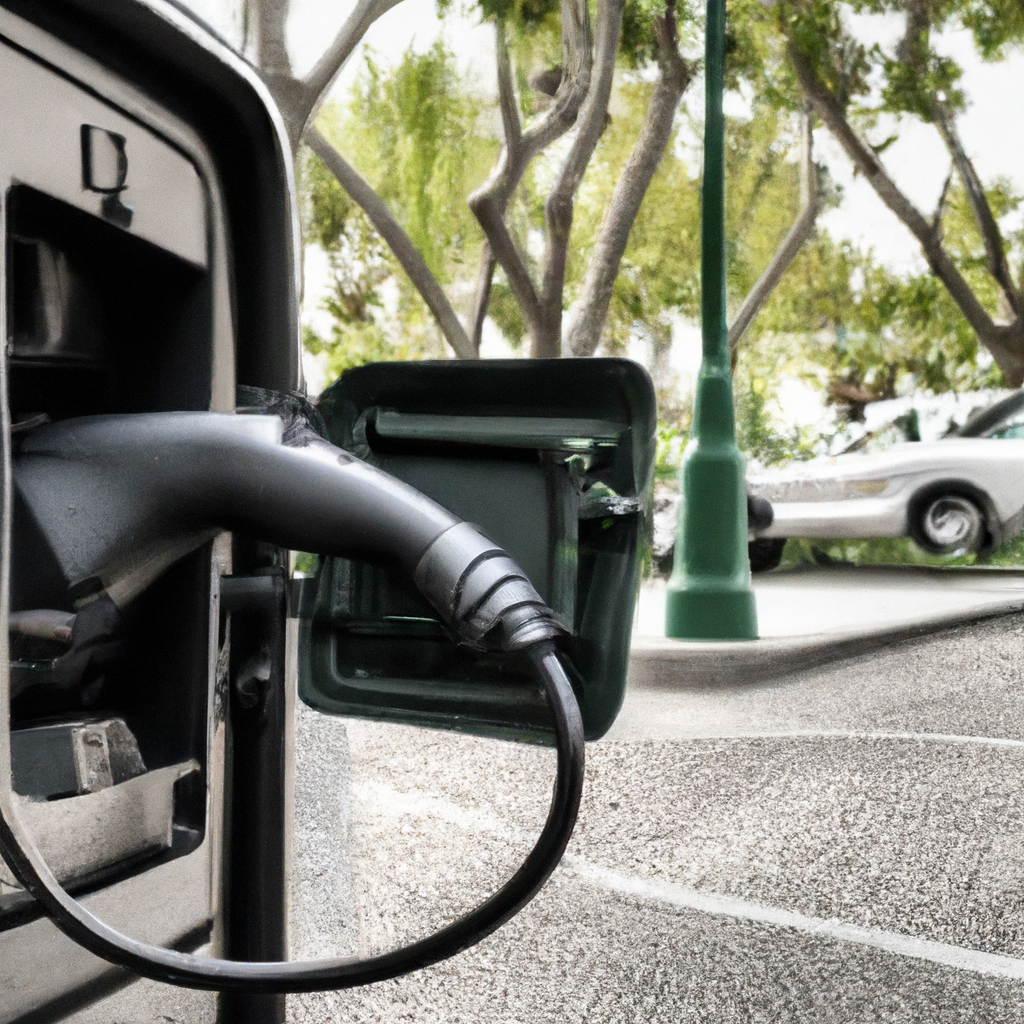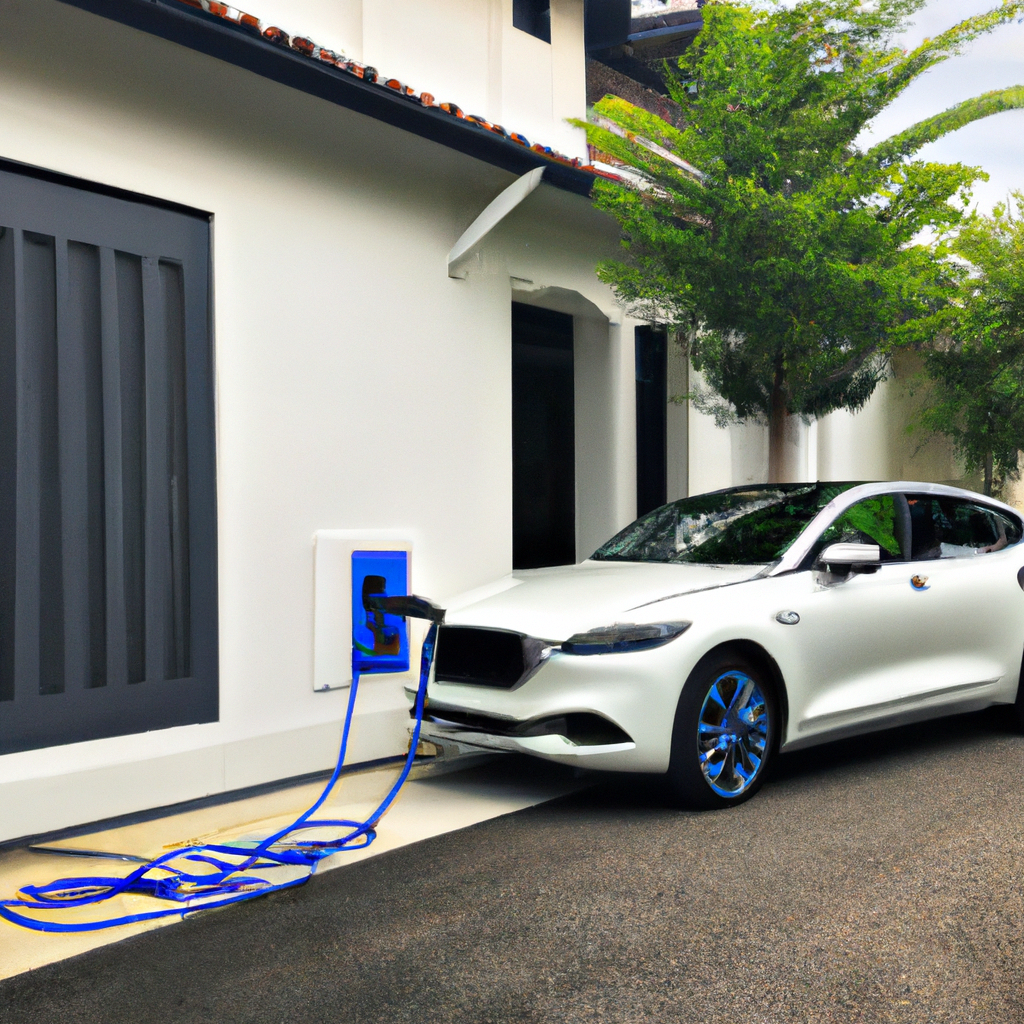
Looking to install an EV charger but not sure where to start? In this article, we’ll cover all the considerations and costs you need to be aware of. Whether you’re a homeowner or a business owner, understanding the key factors involved in EV charger installation is crucial. From evaluating your electrical infrastructure to determining the right charger type for your needs, we’ve got you covered. Plus, we’ll dive into the various costs associated with installation, including equipment, permits, and labor. By the end of this article, you’ll have a clear understanding of what it takes to get your own EV charger up and running. So let’s get started!
Choosing the Right EV Charger

Level 1 Chargers
Level 1 chargers are the most basic type of EV charger available. They typically come with the vehicle and can be plugged into a standard 120-volt outlet. While they are convenient for occasional charging or for those with shorter daily commutes, they have a slow charging rate of around 4 to 5 miles of range per hour of charging. Level 1 chargers are a good option for those who only need to top up their battery overnight.
Level 2 Chargers
If you require faster charging speeds, a Level 2 charger is the way to go. These chargers operate at 240 volts and can provide anywhere from 10 to 60 miles of range per hour of charging, depending on the charger’s power output and the vehicle’s charging capabilities. Level 2 chargers are more efficient than Level 1 chargers and are ideal for those with longer commutes or who want to charge their vehicle in a shorter amount of time.
DC Fast Chargers
DC Fast Chargers, also known as Level 3 chargers, are the fastest option for charging your EV. They use a different charging method, bypassing the vehicle’s onboard charger and directly providing DC power to the battery. This allows for incredibly fast charging speeds, with some DC Fast Chargers capable of delivering up to 350 miles of range in just 20 minutes. However, it’s important to note that not all vehicles are compatible with DC Fast Chargers, so be sure to check your vehicle’s capabilities before considering this option.
Electrical System Considerations
Understanding Power Requirements
Before installing an EV charger, it’s crucial to understand the power requirements of your chosen charger and your vehicle. Different chargers have varying power outputs, measured in kilowatts (kW), and your vehicle may have specific charging capabilities. Make sure to choose a charger that aligns with your vehicle’s needs and your charging preferences.
Determining Available Capacity
Next, you’ll need to determine the available capacity in your electrical system. This involves assessing your home or business’s electrical panel and understanding how much power is currently being used. If the panel has sufficient capacity, you may not need to make any upgrades. However, if the capacity is limited, you may need to consider upgrading your electrical panel to accommodate the additional power demand of an EV charger.
Upgrading Electrical Panel
Upgrading your electrical panel may be necessary to ensure your EV charger operates safely and efficiently. This involves increasing the panel’s amperage or adding a subpanel to handle the additional power load. It’s important to hire a licensed electrician for this task to ensure compliance with local electrical codes and to ensure the upgrade is done correctly.
Considering Future Expansion
When choosing an EV charger and assessing your electrical system, it’s important to consider future expansion. If you anticipate adding more EVs to your household or business in the future, it’s wise to plan for additional charging capacity. This can help prevent the need for future upgrades and reduce the likelihood of power limitations.
Location and Accessibility
Indoor vs. Outdoor Installation
One of the first considerations when installing an EV charger is whether to install it indoors or outdoors. Both options have their pros and cons. Indoor installations offer protection from the elements, while outdoor installations provide convenience and eliminate the need for routing cables through walls. Ultimately, the choice depends on your personal preferences, available space, and the layout of your property.
Proximity to Electrical Panel
When choosing a location for your EV charger, it’s important to consider the proximity to your electrical panel. The closer the charger is to the panel, the easier and more cost-effective the installation will be. Installing the charger too far away can result in longer cable runs and potentially higher installation costs.
Available Wall Space
If you opt for a wall-mounted EV charger, you’ll need to ensure you have sufficient wall space for installation. Measure the dimensions of the charger and ensure there is enough room for proper mounting and cable management. Additionally, consider the location of other equipment or structures that may interfere with the charger’s placement.

Ease of Cable Management
Effective cable management is crucial for a clean and tidy installation. Consider the logistics of routing the charging cable from the charger to your vehicle. Ensure there are no obstacles and plan for any necessary cable management accessories, such as cable clips or conduits, to keep the cable organized and protected.
Permitting and Code Compliance
Researching Local Regulations
Before installing an EV charger, it’s essential to research and understand the local regulations regarding EV charger installations. Different jurisdictions may have specific requirements and restrictions, such as permitting processes, setback requirements, or aesthetic guidelines. Familiarize yourself with these regulations to ensure compliance and to avoid any potential issues down the line.
Obtaining Necessary Permits
Once you have a clear understanding of the local regulations, you’ll need to obtain the necessary permits for the installation. This typically involves submitting an application to the local building or planning department and paying any associated fees. Permitting ensures that the installation meets safety standards and that it is done by a qualified professional.
Meeting Electrical Code Requirements
Electrical code requirements vary from jurisdiction to jurisdiction, but they generally aim to ensure safe and reliable electrical installations. It’s crucial to hire a licensed electrician who is familiar with the local electrical codes and can install the EV charger according to these requirements. This ensures not only compliance but also the safety of the installation.
Ensuring Safety Standards
Safety should always be a top priority when installing an EV charger. Ensure that the charger you choose is certified by recognized safety organizations, such as UL (Underwriters Laboratories), to meet the necessary safety standards. Additionally, hire a qualified electrician who follows best practices and adheres to safety protocols during the installation process.
Installation Methods

Hardwired vs. Plug-In Chargers
When it comes to connecting your EV charger to your electrical system, you have the option of choosing between a hardwired or a plug-in charger. Hardwired chargers are permanently connected to your electrical panel, while plug-in chargers use a standard electrical outlet. Hardwired chargers provide a neater and more permanent installation, while plug-in chargers offer more flexibility and portability.
Wall-Mounted Chargers
Wall-mounted EV chargers are the most common installation method. They are mounted on a wall, typically near the parking space, and offer a convenient and organized charging solution. Wall-mounted chargers are available in various sizes and designs to suit different preferences.
Pole-Mounted Chargers
For outdoor charging solutions, pole-mounted chargers are a popular choice. These chargers are mounted on a pedestal or pole and can be installed virtually anywhere with access to electrical power. Pole-mounted chargers provide flexibility in terms of placement and can be easily accessible for multiple vehicles.
Ground-Mounted Chargers
Ground-mounted chargers are another option for outdoor installations, particularly in areas where wall or pole mounting is not feasible. These chargers are directly placed on the ground and provide a stable and secure charging solution. They may require additional site preparation and cable routing considerations.
Wiring and Conduit Requirements
Wire Gauge and Ampacity
The wire gauge and ampacity of the wiring used for the EV charger installation are critical for safety and performance. The wire gauge refers to the thickness of the wire, which affects its ability to carry a specific amount of current. The ampacity, on the other hand, is the maximum amount of current a wire can handle. It’s important to consult an electrician to determine the appropriate wire gauge and ampacity for your specific installation.

Conduit Types and Sizing
Conduits are used to protect and route the wiring for the EV charger installation. There are various types of conduits available, including PVC, metal, or flexible conduit. The conduit size should be selected based on the number and thickness of the wires it will contain. Proper conduit sizing is important for efficient cable management and protection against environmental factors.
Protecting Wiring from Environmental Factors
EV charger wiring should be adequately protected from environmental factors, such as moisture, heat, and physical damage. This can be achieved by using appropriate conduit types, implementing proper cable routing techniques, and ensuring all connections are securely enclosed. Protection from environmental factors helps prevent damage to the wiring and ensures safe and reliable charging.
Grounding and Bonding
Proper grounding and bonding are essential for electrical safety. These measures help prevent electrical shocks, fires, and equipment damage. Your EV charger installation should include proper grounding of the charger and bonding of the electrical system. This ensures that any stray currents are safely redirected and that the electrical system remains stable and secure.
Infrastructure Upgrades
Assessing Electrical Service Capacity
Before installing an EV charger, it’s crucial to assess the capacity of your electrical service. This involves determining the size of your electrical service panel and the available capacity. If your electrical service is already operating near its maximum capacity, you may need to consider upgrading it to accommodate the additional power demand of the EV charger.
Transformer Upgrades
In some cases, transformer upgrades may be necessary to support an EV charger installation. Transformers convert higher voltage electricity from the grid to a lower voltage suitable for use in homes or businesses. Upgrading the transformer can ensure that sufficient power is available for the EV charger and other electrical loads.

Distribution Panel Upgrades
If your electrical distribution panel does not have enough spare capacity to accommodate the EV charger, upgrading the panel may be necessary. A distribution panel upgrade involves increasing the panel’s amperage and/or adding additional circuits to handle the increased power demand. This upgrade should always be done by a licensed electrician to comply with electrical codes and ensure a safe installation.
Coordinating with Utility Company
Some infrastructure upgrades, such as transformer upgrades, may require coordination with your utility company. It’s important to contact your utility company early in the planning stage to discuss your plans and determine any necessary upgrades or approvals. They can provide guidance and support throughout the process, ensuring a smooth and compliant installation.
Charging Network Options
Stand-Alone Charging Stations
Stand-alone charging stations are individual units that are not connected to a larger network. These chargers can be installed at home, businesses, or public locations and provide charging capabilities for one or a few vehicles at a time. Stand-alone charging stations are a reliable and straightforward option for EV charging.
Networked Charging Stations
Networked charging stations are connected to a larger charging network that allows for remote monitoring, management, and billing. These chargers offer more advanced features, such as user authentication, load management, and the ability to track usage and collect data. Networked charging stations are often found in larger-scale installations, such as commercial parking lots or public charging stations.
Smart Charging Systems
Smart charging systems encompass a range of advanced features that optimize the charging process. These systems can analyze electricity rates, vehicle schedules, and grid conditions to determine the most cost-effective and efficient charging strategy. Smart charging systems may also integrate with renewable energy sources or energy storage systems, further enhancing their environmental and cost benefits.
Remote Monitoring and Management
Remote monitoring and management capabilities allow for real-time monitoring of charging sessions, access to charging data, and the ability to control charging settings remotely. This feature is particularly useful for fleet managers or businesses that need to track usage, manage energy costs, and ensure chargers are functioning correctly.
Maintenance and Support
Routine Inspections and Cleaning
Regular inspections and cleaning are important to keep your EV charger operating optimally. Inspections should include visual checks for any signs of damage, loose connections, or worn-out components. Cleaning involves removing any dust, debris, or corrosion that may accumulate on the charger, plugs, or connectors. Following the manufacturer’s recommended maintenance schedule can help prolong the lifespan of your charger.
Software Updates and Maintenance
Just like any other electronic device, EV chargers often receive software updates to improve their performance, compatibility, and security. It’s important to stay up to date with these updates to ensure your charger continues to function optimally. Additionally, periodic maintenance may be required to keep the charger’s internal components in good condition and address any potential issues.
Troubleshooting and Repair
In the event of any issues or malfunctions with your EV charger, troubleshooting and repair services may be necessary. It’s recommended to contact a certified technician or the charger’s manufacturer for assistance, especially if the charger is still under warranty. Proper troubleshooting and timely repairs can minimize downtime and ensure that your charger remains operational.
Warranty and Service Plans
When purchasing an EV charger, it’s essential to consider the warranty and service plans offered. Warranties provide coverage for potential defects or issues with the charger, while service plans may include additional support, such as priority service or extended maintenance. Understanding the warranty terms and available service plans can give you peace of mind and protect your investment.
Cost Considerations
EV Charger Equipment Costs
The cost of the EV charger itself can vary depending on the type, brand, and features. Level 1 chargers are typically the least expensive option, while Level 3 DC Fast Chargers tend to be the most expensive. It’s important to consider your charging needs, budget, and any desired features when determining the best charger for you.
Electrical Installation Costs
The cost of electrical installation for an EV charger depends on various factors, including the complexity of the installation, the distance between the electrical panel and the charger, and any necessary infrastructure upgrades. It’s recommended to obtain quotes from licensed electricians to get an accurate estimate of the installation costs.
Permitting and Regulatory Fees
Permitting and regulatory fees are another factor to consider when budgeting for an EV charger installation. These fees can vary depending on your location and the specific requirements of your jurisdiction. Contact your local building or planning department to determine the applicable fees and ensure they are included in your budget.
Operation and Maintenance Expenses
Operating and maintaining an EV charger also come with costs. These expenses may include electricity costs, routine maintenance, software updates, and any necessary repairs. Consider these ongoing expenses when budgeting for your EV charger to ensure you can afford the long-term ownership costs.
In conclusion, choosing the right EV charger involves considering factors such as the charging level, understanding power requirements, assessing location and accessibility, complying with permit and code regulations, selecting the appropriate installation method, determining wiring and conduit requirements, evaluating infrastructure upgrades, exploring charging network options, planning for maintenance and support, and understanding the overall cost considerations. By thoroughly considering each of these factors, you can make an informed decision and ensure a successful EV charger installation that meets your needs and preferences.
RELATED POSTS
View all

